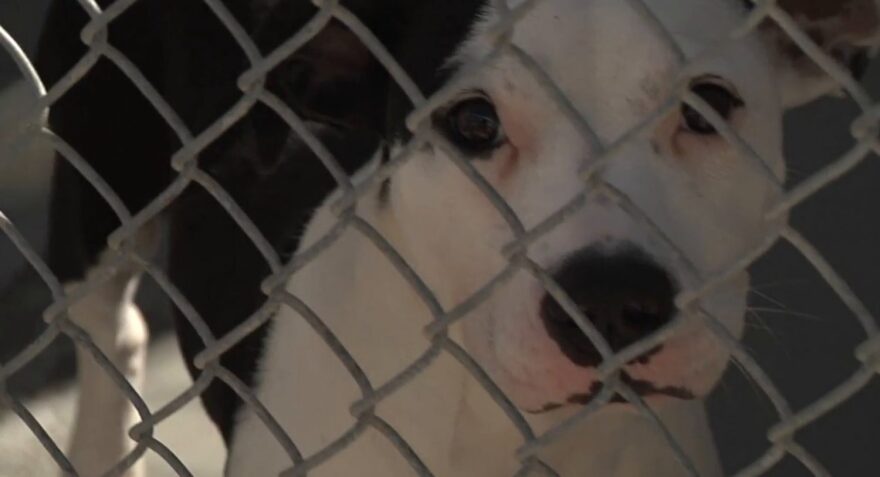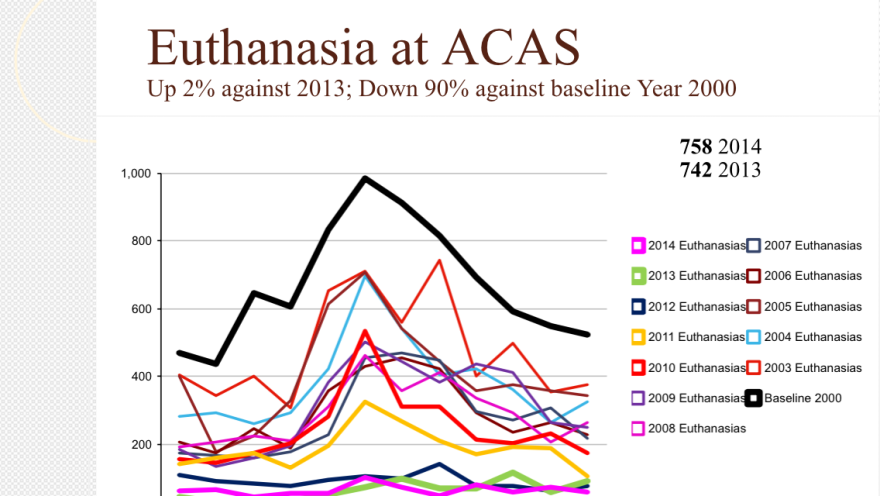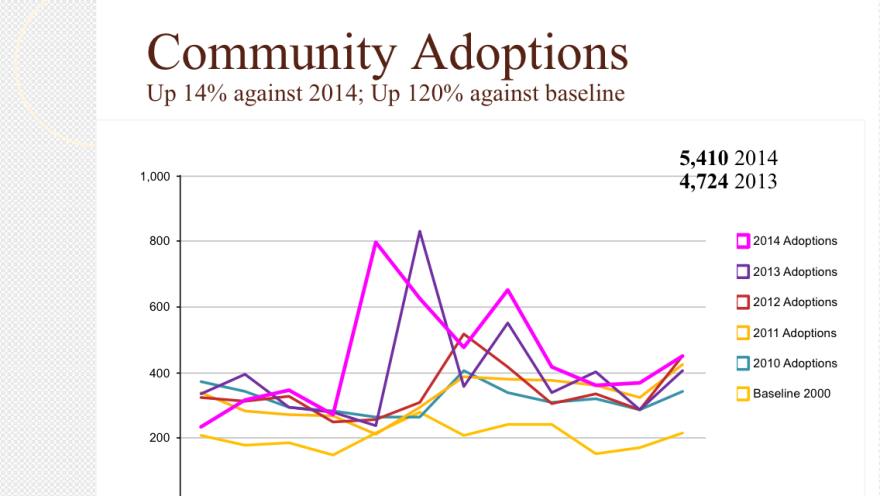Selma, a 1-year-old pit bull mix, was rescued as a stray just over a month ago.
She is healthy, playful and loving but still has not been adopted, and Selma is not alone. Many other dogs and cats at Alachua County Animal Services (ACAS) have the same problem and end up growing up in kennels meant to be a temporary shelter.
The department has been working hard to get its animals adopted and reach its goal of No-Kill Status in Alachua County. It is currently four percent away from achieving No-Kill Status after a recorded 14 percent increase in adoptions since 2013.
Vernon Sawyer, animal services director for Alachua County, represented ACAS at Tuesday’s Alachua County Commission meeting to discuss the shelter’s progress in reaching the no-kill goal. Adoption events and increased advertising have increased that progress.
Sawyer said the shelter has led this effort since 2001. He went on to explain the shelter, the only intake shelter in the county, would not be forced to put down any healthy or treatable animal, like Selma.
New shelter volunteer Samantha Kuzovo trained Selma on Tuesday. She said she was impressed by Selma's high spirits but said the pit bull mix could remain homeless for other reasons.
“She seems very trainable," Kuzovo said. "If we can just get her to sit and not jump up and down, I think she’d be really adoptable. She’s been running around the whole time we’ve had her out.”
Sawyer also said most people want to adopt puppies and not big, old dogs.
He said families look at many characteristics before adopting a pet, which makes it tougher to find a home for each one. Health, age, size and behavior all factor in to how adoptable an animal is.
"It's a challenge," he said. "But as long as we have kennels open, then we will keep them for as long as we can."
The bigger challenge is what to do when they run out of room.
“When we start getting closer to peak capacity, we have to look at other means of reducing our population," he said.
Shelter Supervisor Jane Grantman said the shelter has a total of 105 dog kennels and 70 cat kennels. As of Wednesday, the shelter had 25 openings for dogs and 28 for cats. Grantman said that’s a lot of open spaces in comparison to its most crowded period during the summer months.
The shelter works with rescue groups to help move animals in and out of the shelter, but animals not transferred or adopted could be euthanized.
Yet, euthanasia has gone down by three percent from 2013 with a combined 90 percent drop in the last decade since their fight for no-kill status began.
According to Sawyer, to reach no-kill status the shelter needs to have at least a 90 percent live-release rate, including transfers and adoptions of animals.
Another key component in adoption rate is how animals react around people.
"Their behavior inside a kennel is very different than outside,” Grantman said. “So it's always good to take them out and really get a feel for the dog."
In 2014, 5,410 were adopted through ACAS. Many of these were during special adoption events like Maddie's Pet Adoption Days and the ASPCA Rachel Ray $100k Challenge.
Sawyer added sterilization also plays a big part in reaching the no-kill goal. Spayed and neutered pets prevent more strays from being born resulting in an overabundance of animals.
Sawyer said this problem can be solved with the help of the community. He wants to achieve no-kill status by the end of this year.
“Spay and neuter your pets," he said. "We cannot make this happen without help from the community.”



